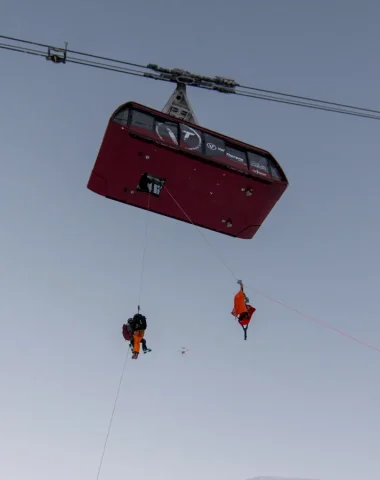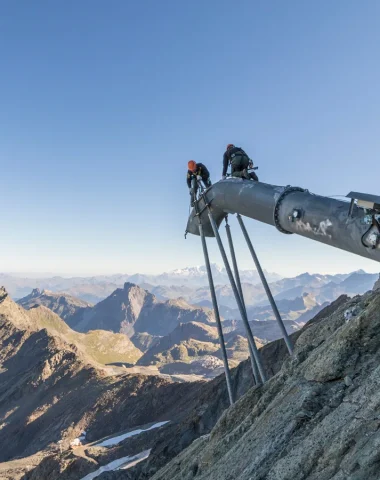I'm not telling you anything if I tell you that on a chairlift, the seats are attached to a metal cable. But did you know that it takes three steps to install this cable?
First, a cable of approximately 15mm in diameter is installed using a helicopter. The final cable is then pulled by this rope through the stations and over all the pylons. Finally, you must connect the two ends of the cable using a splice. The cable then becomes an infinite loop.
How is a ski lift cable constructed?
A ski lift cable is actually made up of a multitude of small metal cables and a plastic core which serves as a support.
These multiple small cables are wired in a helix and form what are called strands. These strands are then wound helically around the core of the cable.
The advantages of a compact plastic core are multiple:
- The diameter and length are very stable over time
- The strands are perfectly supported because it bears their imprint.
What is a splice, why and when to do it?
Now that we know how a cable is made, let's focus on the splice. As a reminder, this is the assembly of two ropes, or cables, made by connecting their ends. This process has been used for a very long time, particularly by sailors on the ropes of sailboats. Even today, a long splice is the only way to obtain a closed loop without significantly changing the diameter of the cable.
In the case of a ski lift, it is necessary to make a splice when installing a new cable or when it is necessary to shorten a cable stretched by several years of service.
In practice, how do you make a splice?
Making a splice, or splicing, is a delicate and almost entirely manual operation.
You should know that making a splice is standardized. Its length, for example, must be equal to or greater than 1200 times the nominal diameter of the cable. In the case of a chairlift with a 45mm diameter cable, this means that the splice must have a total length of 54m!
We therefore start by unwinding the strands at each end of the cable to arrive at this length.
The strands are then rewound together. This simple braiding provides enough friction so that the strands do not slip or separate from each other.
To avoid having all the strands coming out of the cable in the same place, “knots” are made. This operation consists of removing the core of the cable a few meters to replace it with one of the strands. The strand will have previously been cut, straightened and wrapped in plastic to have the same size and consistency as the core. Finally, we tap on the cable so that it “tightens” well and prevents it from relaxing when tensioning. Here again it is very precise since at the location of the nodes, the diameter of the cable must not vary by more than 10%. This operation is carried out at several locations in the splice and as many times as there are strands making up the cable.
Once all the knots have been made, the cable is gradually put back under tension, it is ready to be used to transport the seats and the skiers!
Themes









